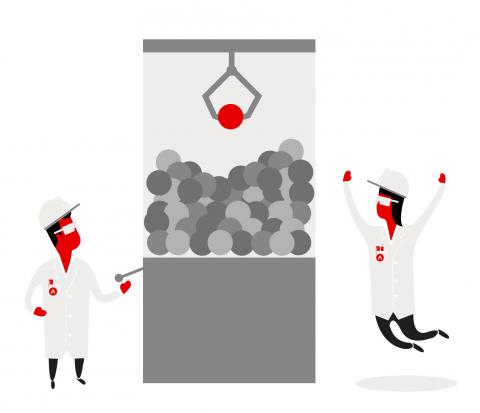Unreliable antibodies have led to numerous instances of false findings, failed experiments, and wasted money and samples. Some antibodies have been observed binding to other proteins in addition to their primary target while other antibodies have been shown to bind to just one target, but not the target indicated on the product label. In some cases, an antibody’s accuracy and specificity vary from one lot to the next, suggesting quality-control issues in the manufacturing process. All of these errors muddy— and in some cases, completely undermine— research results.

In an attempt to sort the good from the bad another portal allowing researchers to compare data from different antibodies has been established. The new portal is populated with data regarding histone antibodies, which are central to the field of epigenetics, and frequently show difficulties in detecting their intended targets in application such as immunoblotting, immunostaining and ChIP. The authors have examined 100 commercially available antibodies targeting histones post-translational modifications by their binding to a peptide microarray. Other established forums which aim to assist in selecting previously validated antibodies include CiteAb, pAbmAbs and antibodypedia.
Although the use of such databases may increase the odds of tracking down a useful antibody, and thus minimise wasted time and money, working from the recommendations of others may not offer the instant solution we desire in terms of antibody validation. Different labs have different standards. While one lab may favour the use of a particular antibody, if their validation is not sufficiently rigorous this may encourage the use of a bad antibody across the research community, and the credibility of antibody-based results continues to slide.
The antibody problem has been exacerbated by the explosion of genomic and proteomic medicine over the last few decades. This has driven a rapid growth in the number of antibody targets of interest and increased the demand for more nuanced epitopes. Consequently, antibody retailers are struggling to maintain comprehensive, well supported catalogues, and as a result many take on large numbers of existing antibodies for resale without devoting adequate resources to validation.
Online resources, like the new histone antibody database, and data sharing with honest reviews of retail antibodies have been proposed as one solution to the dilemma. While this is certainly a step in the right direction, the variability in quality of user reviews may simply serve to add an extra layer of complexity in deciphering the best affinity reagent. With researchers desiring affinity reagents to new targets and requiring reproducibility and certainty from these reagents, the move for many to custom antibodies is inevitable.
The limited resources available in such a competitive research environment often mean that researchers’ lack the necessary time or money to devote to the development of reagents for their work, yet countless research variables mean that there will likely never be a one size fits all validation system for catalogue items. Add to this the use of antibodies across new technology platforms and the limitations of traditional antibodies in generation time, target specificity and sensitivity to the assay environment, and custom antibody alternatives are often the only solution that allow researchers to meet all their requirements.
At Avacta Life Sciences we are able to direct our selection process according to your needs, to identify Affimer reagents to potentially difficult targets that function in the required end user assays. We can generate these custom antibody alternatives within weeks compared to the months of antibody generation.
Although the refinement and continued validation of currently available affinity reagents is important, the central role of these reagents in research is too important to rely on previously failed methods. Just as the end use for an antibody, aptamer and Affimer have changed and become more complex, so has the process for developing and characterising these reagents.